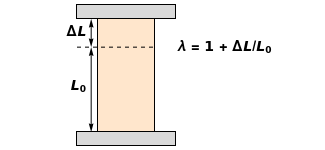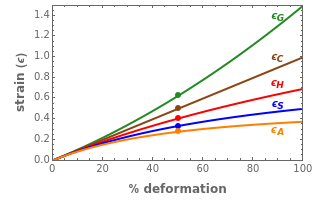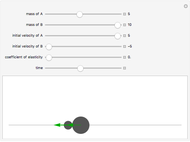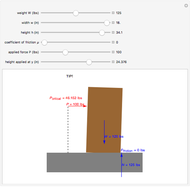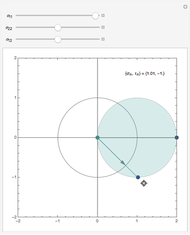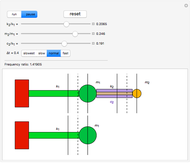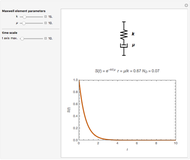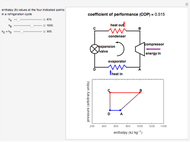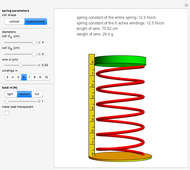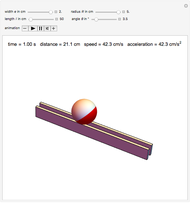Five Definitions of Strain for Large Deformations

Requires a Wolfram Notebook System
Interact on desktop, mobile and cloud with the free Wolfram Player or other Wolfram Language products.
This Demonstration considers the differences between five definitions of strain when applied to large uniaxial tensile and compressive deformations. These are the engineering strain, also known as Cauchy's strain,  , Hencky's strain, also known as natural or true strain,
, Hencky's strain, also known as natural or true strain,  , Green's measure, also known as Kirchhoff's,
, Green's measure, also known as Kirchhoff's,  , Swainger's measure,
, Swainger's measure,  , and Almansi's measure, also known as Murnagham's,
, and Almansi's measure, also known as Murnagham's,  . Also shown is the ratio,
. Also shown is the ratio,  , between the length of the deformed specimen,
, between the length of the deformed specimen,  , and its original length,
, and its original length,  .
.
Contributed by: Mark D. Normand and Micha Peleg (March 2011)
Open content licensed under CC BY-NC-SA
Snapshots
Details
Snapshot 1: 1% tensile deformation; note that all five strains have almost identical values
Snapshot 2: 90% tensile deformation; note the differences between the five strains
Snapshot 3: 1% compressive deformation; note that all five strains have almost identical values
Snapshot 4: 50% compressive deformation; note the differences between the five strains
Snapshot 5: 90% compressive deformation.; note the large differences between the five strains
This Demonstration depicts the relationship between strain defined in five different ways and the percent deformation of specimens subjected to uniaxial tension and compression. The percent deformation is selected with a slider and the corresponding strain values are displayed numerically and as moving dots on curves. Also shown is the ratio,  , between the length of the stretched or compressed specimen,
, between the length of the stretched or compressed specimen,  and
and  , where
, where  is the initial length and
is the initial length and  the absolute deformation in length units. The strain definitions are: Cauchy's strain,
the absolute deformation in length units. The strain definitions are: Cauchy's strain,  , Hencky's,
, Hencky's,  , Green's,
, Green's,  , Swainger's,
, Swainger's,  , and Almansi's,
, and Almansi's,  . Each strain is plotted versus the percent deformation,
. Each strain is plotted versus the percent deformation,  , as a colored curve along which the dots move.
, as a colored curve along which the dots move.
References:
M. Reiner, "Phenomenological Macrorheology," Rheology, Theory and Application, F. R. Eirich, ed., New York: Academic Press, 1956 pp. 9–62.
M. G. Sharma, "Theories of Phenomenological Viscoelasticity Underlying Mechanical Testing," Testing of Polymers: Vol. 1, J. V. Schmitz, ed., New York: Interscience Publishers, 1965 pp. 147–199.
Permanent Citation


